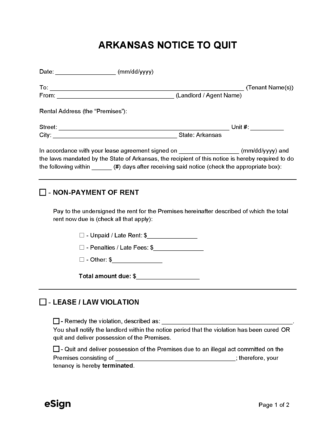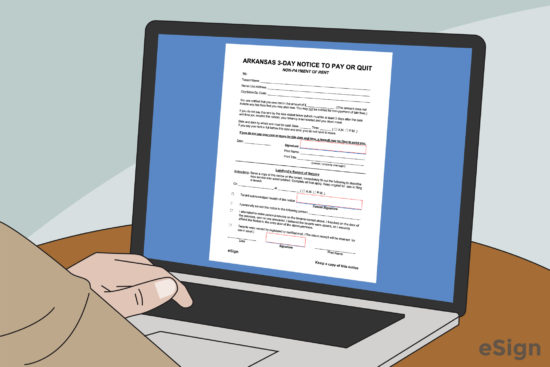Eviction Notices: By Type (4)
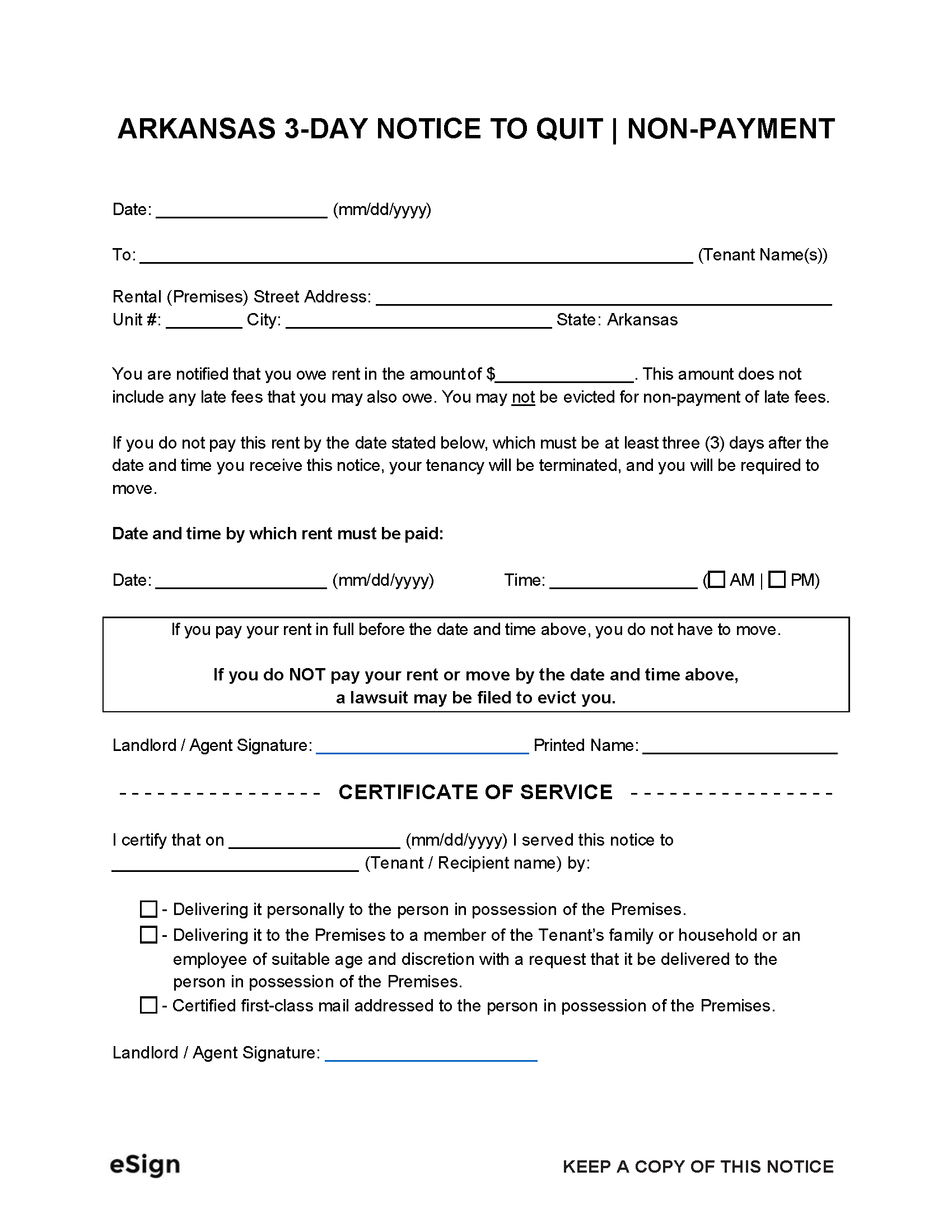
3-Day Notice to Quit | Non-Payment – Notifies a tenant that they have failed to pay rent and must do so or risk eviction. Download: PDF, Word (.docx), OpenDocument
|
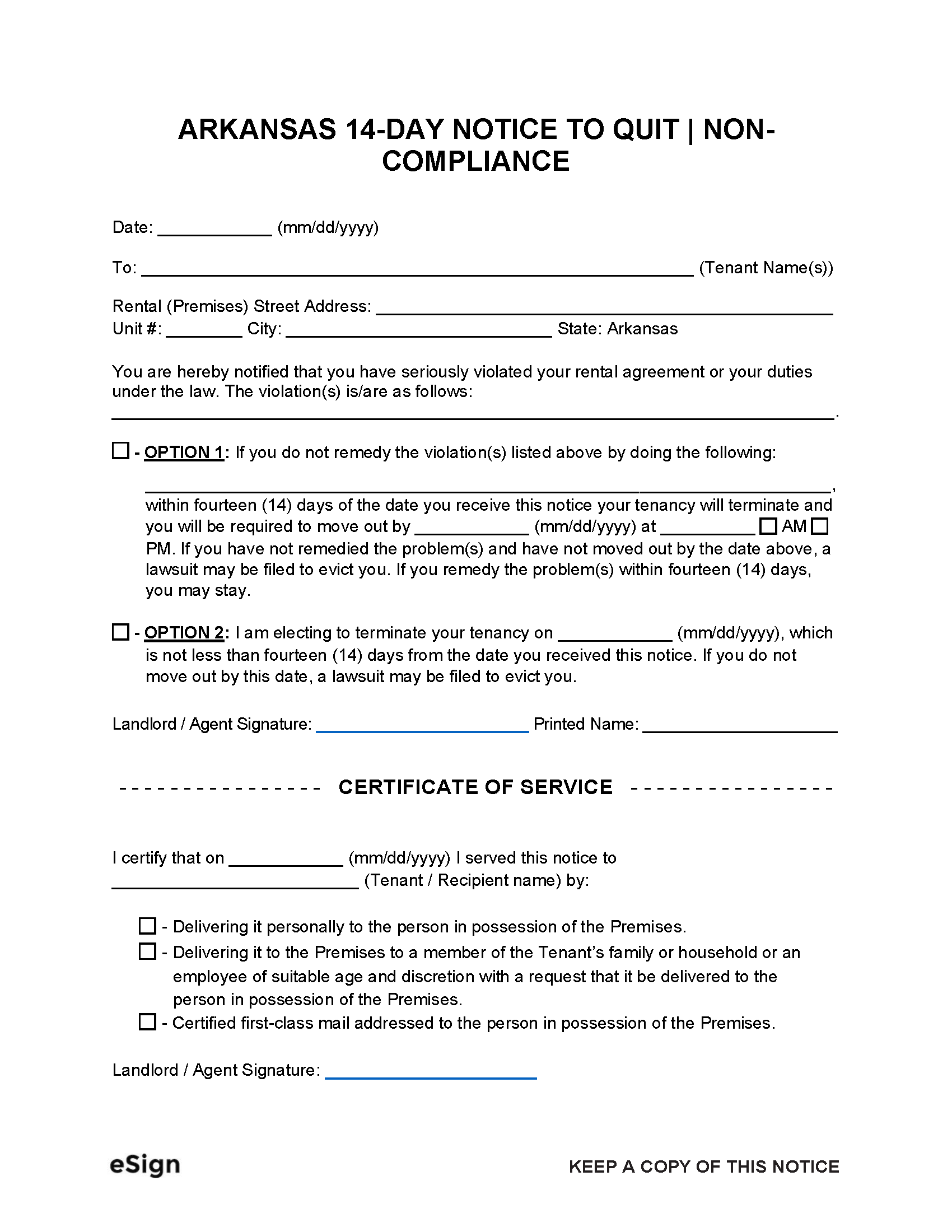 10-Day Notice to Quit | Non-Payment (Criminal) – Instructs a tenant to vacate the premises within 10 days due to non-payment of rent or face possible criminal eviction. 10-Day Notice to Quit | Non-Payment (Criminal) – Instructs a tenant to vacate the premises within 10 days due to non-payment of rent or face possible criminal eviction.
Download: PDF, Word (.docx), OpenDocument |
 14-Day Notice to Quit | Non-Compliance – Informs a tenant that they have breached their contract (other than non-payment of rent). 14-Day Notice to Quit | Non-Compliance – Informs a tenant that they have breached their contract (other than non-payment of rent).
Download: PDF, Word (.docx), OpenDocument |
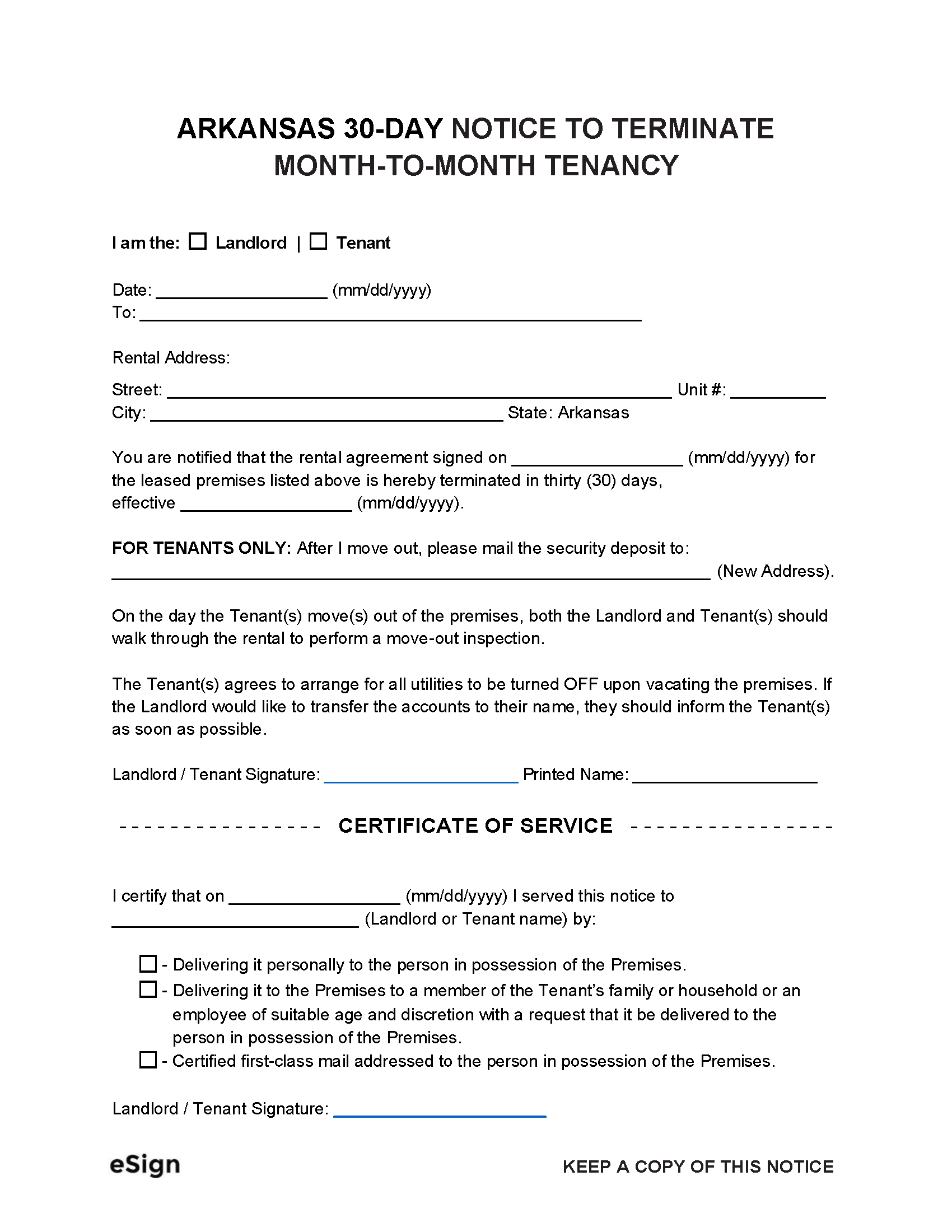 30-Day Notice to Terminate | Month-to-Month Lease – Used by a landlord or tenant to notify the other party that they wish to terminate a month-to-month rental arrangement. 30-Day Notice to Terminate | Month-to-Month Lease – Used by a landlord or tenant to notify the other party that they wish to terminate a month-to-month rental arrangement.
Download: PDF, Word (.docx), OpenDocument |
Notice Requirements
How to Evict a Tenant in Arkansas
Step 1 – Complete and Deliver Notice
Before they can start an eviction suit, the landlord will have to deliver the appropriate notice to quit to their tenant:
- 3-Day Notice to Quit for Non-Payment
- 14-Day Notice to Quit for Non-Compliance
- 30-Day Notice to Terminate Lease
Failure to Vacate
In Arkansas, landlords can file a failure to vacate (criminal eviction) lawsuit, which is different from the unlawful detainer action covered in these instructions. For criminal evictions, a 10-Day Notice to Quit for Non-Payment must first be delivered to the tenant.
If the tenant does not vacate within 10 days, the landlord can file for failure to vacate, which could result in the tenant being convicted of a misdemeanor and paying fines of up to $25/day each day they remain on the premises.
Step 2 – Unlawful Detainer Suit (Eviction)

Step 3 – Court Order

Step 4 – Hearing on Possession (If Applicable)

Step 5 – Trial (If Applicable)

Step 6 – Writ of Possession

Step 7 – Damages

Court Forms + Resources
Forms
- Affidavit
- Signed by: Landlord
- Civil Cover Sheet
- Signed by: N/A
- Complaint
- Signed by: Landlord
- Notice of Intent to Issue Writ of Possession
- Signed by: Landlord
- Summons
- Signed by: Court Clerk and Process Server
- Writ of Possession
- Signed by: Judge
Resources
